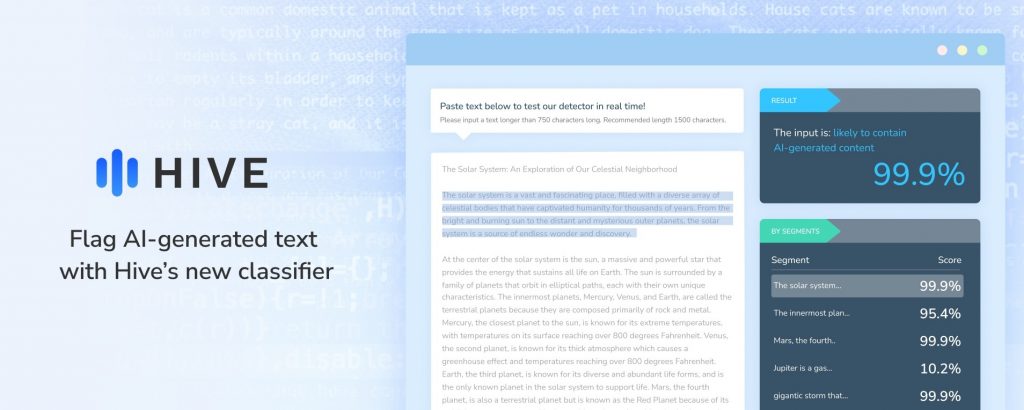Buisness
Hive: Overview – Hive Products, Benefits , Features And Advantage Of Hive And Its Experts Of Hive.
Hive’s decentralized governance model allows stakeholders to have a say in the platform development and it uses a proof of stake consensus algorithm to ensure that the network is secure.

Hive is a blockchain based platform that allows developers to build decentralized applications (d Apps) that are secure, transparent, and scalable. Hive is a fork of the Steem blockchain and its core technology is based on the Graphene blockchain framework. Hive was created to address some of the issues that were present in the Steem blockchain such as centralization and lack of community control. Hive’s decentralized governance model allows stakeholders to have a say in the platform development and it uses a proof of stake consensus algorithm to ensure that the network is secure.
Hive Overview
Hive is designed to be flexible and adaptable, and it supports a wide range of Apps and use cases including social media, gaming, finance, and more. The platform’s native cryptocurrency is called Hive and it can be used to access various services and features on the Hive network. Hive is an open-source data warehouse system that was developed by Facebook to handle large amounts of data stored in Hadoop Distributed File System (HDFS). It provides a SQL-like interface for querying and analyzing data, which makes it easier for non-technical users to work with big data.
Hive uses a language called Hive QL which is very similar to SQL, to enable users to write queries that can be translated into MapReduce jobs that run on Hadoop. Hive QL supports a wide range of operations including SELECT, WHERE, GROUP BY JOIN and many more.
Hive is often used in big data environments where data analysts need to query and analyze large volumes of data quickly and efficiently. It also provides a range of tools for managing and monitoring Hadoop clusters, including Hive Metastore for storing metadata and Hive Server for managing client connections.
Hive is a powerful and flexible tool for working with big data, and its ability to interface with Hadoop makes it a popular choice for data analysts and developers working with large datasets.
Hive Products
Hive is an open-source data warehouse system that provides a wide range of products and tools for working with big data. Some of the most popular Hive products include:
- Hive QL: This is the SQL-like language used to query and analyze data in Hive. It provides a familiar interface for data analysts and enables them to write complex queries that can be translated into MapReduce jobs that run on Hadoop.
- Hive Metastore: This is a centralized metadata repository that stores information about tables, partitions, and other objects in a Hive database. It enables users to share metadata across multiple Hive instances and helps to ensure consistency and accuracy in metadata management.
- Hive Server: This is a client-server interface that enables users to submit queries to a Hive instance and receive results back. It provides a range of features for managing client connections and controlling access to data.
- Hive Thrift Server: This is a high-performance client-server interface for Hive that uses Thrift to enable users to interact with Hive using a variety of programming languages, including Java, Python, and Ruby.
- Hive JDBC Driver: This is a Java database connectivity (JDBC) driver that enables users to connect to Hive using standard SQL tools and interfaces.
- Hive ODBC Driver: This is an open database connectivity (ODBC) driver that enables users to connect to Hive using standard ODBC tools and interfaces.
Hive provides a powerful and flexible set of tools and products for working with big data. Its ability to interface with Hadoop makes it a popular choice for data analysts and developers working with large datasets.
Benefits Of Hive, Features And Advantage
Benefits:
- Scalability: Hive can handle large datasets and scales well as data grows.
- SQL-like language: Hive uses a SQL-like language called Hive QL which makes it easy for users to write queries and perform data analysis.
- Integration with Hadoop ecosystem: Hive is tightly integrated with the Hadoop ecosystem and can work seamlessly with other Hadoop tools such as HDFS, MapReduce, and YARN.
- User-friendly interface: Hive provides a user-friendly interface for data analysts and business users to query and analyze data without requiring them to have deep technical knowledge.
- Flexibility: Hive can handle structured, semi-structured, and unstructured data, making it a versatile tool for different data formats.
- Cost-effectiveness: Hive is an open-source tool, which means that it is free to use and can help organizations save on licensing costs.
- Easy data retrieval: Hive allows users to retrieve data quickly and easily, even from complex and large datasets, which can lead to faster decision-making and better business outcomes.

Features:
Hive is a data warehousing tool that is built on top of Hadoop. Here are some of the features of Hive:
- SQL-like interface: Hive provides a SQL-like interface for querying large datasets stored in Hadoop Distributed File System (HDFS).
- Schema on Read: Hive supports schema on read, which means that the schema of the data can be inferred at the time of reading the data. This allows for flexibility in the data format.
- Data Types: Hive supports a variety of data types, including primitive types, complex types, and collection types.
- Partitioning: Hive supports partitioning of data, which allows for faster query processing and more efficient data management.
- Joins: Hive supports different types of joins including inner join, left outer join, right outer join, and full outer join.
- User-defined functions: Hive allows users to define their own functions in Java, Python, or any other programming language.
Advantage:
- Scalability: Hive is built on top of Hadoop, which is a distributed system designed to handle large datasets. This means that Hive can easily scale to handle petabytes of data.
- Performance: Hive optimizes queries by converting them into MapReduce jobs, which are executed in parallel across a cluster of machines. This allows for fast query processing and analysis.
- Familiar interface: Hive provides a SQL-like interface, which is familiar to most analysts and data scientists. This makes it easy to use and reduces the learning curve.
- Cost-effective: Hive is open-source software, which means that it is free to use and has no licensing costs. Additionally, it can run on commodity hardware, which reduces the overall cost of the system.
- Flexibility: Hive supports schema on read, which allows for flexibility in the data format. This means that data can be easily ingested from a variety of sources, without the need for upfront schema design.
- Integration: Hive integrates with other Hadoop tools such as Pig, HBase, and Spark, which allows for easy data processing and analysis.
- User-defined functions: Hive allows users to define their own functions in Java, Python, or any other programming language. This allows for custom analysis and processing of data.
- Security: Hive provides a secure environment with support for authentication, authorization, and encryption, which ensures that data is protected.

Experts Of Hive
- Tables: In Hive, tables are used to represent data stored in HDFS. A table can be created by defining its schema and specifying the location of data in HDFS.
- Partitions: Hive allows partitioning tables based on one or more columns, which can improve query performance by reducing the amount of data scanned.
- SerDe: Short for Serializer/ Deserializer is used to convert data between the format stored in HDFS and the format used by Hive tables.
- UDFs: User-Defined Functions are custom functions that can be defined by users to extend Hive’s functionality.
- HQL: Hive Query Language is a SQL-like language used to write queries in Hive.
Hive Conclusion
Hive is a powerful data warehouse system that allows users to query and manage large datasets stored in Hadoop Distributed File System (HDFS). Hive uses a SQL-like language called Hive QL to interact with data, allowing users to write queries that are executed as MapReduce jobs. Some of the key concepts related to Hive include tables, partitions, UDFs, and HQL. With these features and concepts, users can efficiently process and analyze big data using Hive. Hive is a valuable tool for data engineers and data analysts who work with large datasets and need a scalable solution for querying and managing their data.
